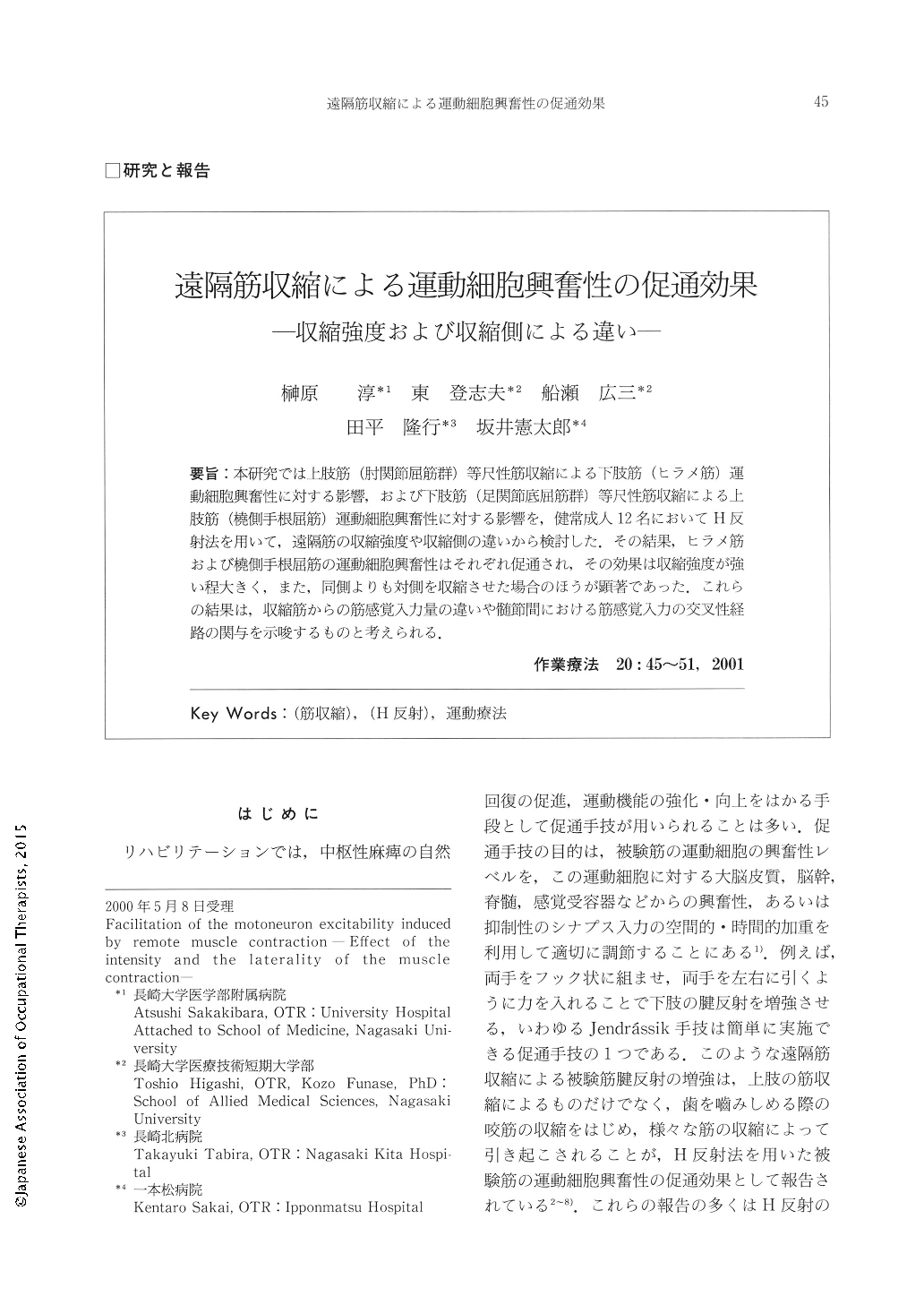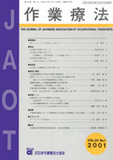Japanese
English
- 販売していません
- Abstract 文献概要
- 1ページ目 Look Inside
- 参考文献 Reference
- サイト内被引用 Cited by
要旨:本研究では上肢筋(肘関節屈筋群)等尺性筋収縮による下肢筋(ヒラメ筋)運動細胞興奮性に対する影響,および下肢筋(足関節底屈筋群)等尺性筋収縮による上肢筋(橈側手根屈筋)運動細胞興奮性に対する影響を,健常成人12名においてH反射法を用いて,遠隔筋の収縮強度や収縮側の違いから検討した.その結果,ヒラメ筋および橈側手根屈筋の運動細胞興奮性はそれぞれ促通され,その効果は収縮強度が強い程大きく,また,同側よりも対側を収縮させた場合のほうが顕著であった.これらの結果は,収縮筋からの筋感覚入力量の違いや髄節間における筋感覚入力の交叉性経路の関与を示唆するものと考えられる.
We examined here the effect of both the intensity and the laterality of the remote muscle contractions on the motoneuron excitability. Two series of experiments were carried out, i. e., effect of contraction of the ankle extensor on the motoneuron excitability of the soleus and the effect of contraction of the elbow flexor on the motoneuron excitability of the flexor carpi radialis. Findings in the present study are, 1) motoneuron excitability of both muscles were significantly increased with the increase in intensity of the remote muscle contractions, and 2) contralateral muscle contractions significantly induced a remarkable increase in motoneuron excitability, more than in the ipsilateral muscle contractions. To explain the neural mechanisms of the present finding, we suggest that the difference in the amount of muscle spindles in the contracted remort muscles, which means the difference of the amount of the muscle afferents, increase the motoneuron excitability as the intensity of the muscle contraction increases. And the inter-segmental pathways presumably induce the difference in the effect of the contra-or ipsi-lateral muscle contraction on the tested motoneuron excitability.

Copyright © 2001, Japanese Association of Occupational Therapists. All rights reserved.


